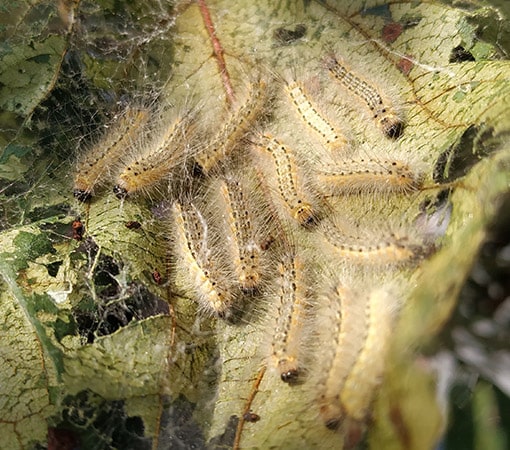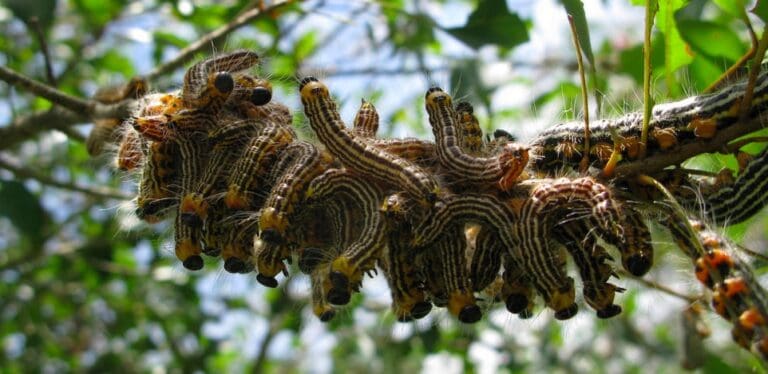Imagine the tranquil spectacle of an oak tree, its majestic canopy reaching towards the heavens. Now envision it overrun by voracious caterpillars, their appetite threatening to strip the giant bare. Oak tree caterpillars, also known as oakworms, can quickly turn an idyllic landscape into a scene of ecological distress. But fear not, for knowledge is power, and this comprehensive guide will equip you with the know-how to effectively combat these unwelcome guests.

Image: www.myheartliveshere.com
Identifying the Perpetrators: Meet the Oak Tree Caterpillars
The term “oak tree caterpillars” encompasses several species that target oak trees for their sustenance, including the Eastern tent caterpillar, the gypsy moth, and the fall webworm. These creatures share certain traits: they are communal feeders, constructing silken nests or webs for protection, and are known to cause significant defoliation. As a result, prompt action is crucial to minimize the damage to your precious oak trees.
Prevention Techniques: A Proactive Approach
Preventing caterpillar infestations is an effective way to safeguard your oak trees. Start by removing any egg masses or nests you encounter during winter or early spring. Additionally, maintaining healthy and strong trees through proper watering, fertilization, and regular inspections can deter pests and make your trees more resilient against attacks. Consider companion planting with marigolds or chrysanthemums, as their scent acts as a natural repellent for oak tree caterpillars.
Eradication Strategies: Combating Oak Tree Caterpillars
Once an infestation has taken hold, it’s time to take decisive action. Below are several effective methods:

Image: gillnursery.com
Manual Removal: Hands-On Pest Control
In the case of small infestations, manual removal is a straightforward solution. Use gloves and long sleeves to protect yourself, then carefully remove the caterpillars from your tree. Submerge them in a bucket of soapy water to eliminate them.
Biological Control: Enlisting Nature’s Allies
Introduce natural predators such as birds or parasitoid wasps into your ecosystem. These creatures feed on oak tree caterpillars, providing a sustainable and eco-friendly solution.
Insecticides: Chemical Warfare against Caterpillars
In severe cases, the judicious use of insecticides may be necessary. Bacillus thuringiensis (Bt) is a bacterium-based insecticide that specifically targets caterpillars without harming other organisms. Opt for non-chemical insecticides like insecticidal soaps or neem oil whenever possible.
Traps: Outsmarting the Caterpillar Menace
Caterpillars gravitate towards sweet substances. Utilize this behavior by setting up sugary traps to catch them. Fill shallow containers with a mixture of water and sugar, and place them at the base of infested trees.
Restoration: Revitalizing Your Oak Trees
After eliminating the caterpillar infestation, it’s essential to nurture your oak trees back to health. Fertilize them to replenish lost nutrients and promote growth. Mulching around the base can help retain moisture and suppress weeds. Monitor your trees regularly for signs of recovery and address any lingering issues promptly.
How To Get Rid Of Oak Tree Caterpillars
Conclusion
Oak tree caterpillars can be a formidable adversary, but with the right knowledge and techniques, you can effectively combat these pests and protect the health of your treasured trees. By employing preventive measures, implementing eradication strategies, and facilitating tree restoration, you can restore the balance to your ecosystem and safeguard the beauty and vitality of your oak trees for years to come.